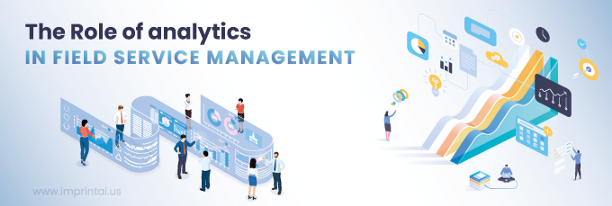
In the digital era “data analytics” has come up as the most buzzing word in business ecosystem. Why has it gained so much popularity? Why is there so much buzz around data analytics?
When we look around we will find each one of us is generating data in our day-to-day lives. Right from watching content online, booking tickets to purchasing daily need items and making digital payments, servers inundated with data. Data analytics comes into picture in an attempt to use this data in a productive way, to analyse customer behavioral patterns, user preferences, market trends, etc.
What is analytics and how does it serve business enterprises?
Unorganized data is just like those health apps in smart phones which are sitting idle and consuming space without serving any purpose. Analytics is a systematic collection of data from various sources in a more organized form. This data collection can then be utilized in innumerable ways for predictive analysis of business sales and growth. To make data collection on the field easy and faster, enterprises, especially the ones dealing in the field service management have digitally transformed their operations by eliminating paper forms and documents.
Introduction of digital forms
Businesses and enterprises in different domains like telecommunication, healthcare, banking, insurance, consumer electronics, etc. require field service management to a greater degree. Technicians, field sales agents, front-line executives, auditors, field service agents visit client sites to carry their work and then collect the data. Conventionally this data has been collected through paper forms, which certainly brings a lot of paper work management. But with field force management software this tedious work has been made a lot easier by introducing the concept of digital forms. Field agents now can collect rich data through these e-forms in lesser time, with more accuracy. The saved time can be utilized to perform other priority tasks which ultimately bring the productivity graph up.
Is analytics capability being utilized for the collected data?

Perhaps doing more number of jobs may prove to be good for an enterprise but how does other enterprises utilize their data collection is also a matter worth pondering over. How they are extracting the data and generating meaningful reports is what sets them apart from the crowd. Enterprises using data analytics are able to optimize their operations and witness higher revenue growth by utilizing data to their advantage. Advanced sales force automation tools like Imprint are capable of generating numerous reports to gauge customer preferences, employee productivity, sales forecasts, etc.
A recent study has revealed that companies which adopted analytics technology saw a jump in their profits by around 16.5%. The SLA performance grew by almost 54.2%. And most importantly, customer retention increased by 38 %.These are significant numbers for any business using field service management.
In her book Business Efficiency for Dummies, Marina Martin claims that inefficient processes can cost enterprises 20-30% of their revenues. Analytics deployed can give insights on: time taken for the field agent to reach the site, time taken to complete the task, periodic performance of each agent and much more.
Consumer based planning and decision making
When companies collect data through digital forms and apply analytics, it helps them focus on strategic decision making. Enterprises usually take decisions keeping their customer service at the top most priority. This gives them a better grip on their customers and sets them apart from other companies. With workforce automation now companies can send different teams in the field and their information is updated through location seamlessly. Managers can now analyze in real-time what kind of tasks are taking longer, and also keep a tab on any delays in reaching client sites, conducting meetings or completing assigned service requests. Corrective actions & prevention actions (CAPA) can always be taken at the right time with analytic tools.Analytics can offer deeper insights to field managers into their operations. Enterprises are able to cut down on operating costs and enhance efficiency and productivity. Field managers who use analytics intelligently have cut down on repeat visits and follow-up, while ensuring customer satisfaction and loyalty.
Figures forecasting future of analytics in enterprises
According to a survey conducted by Deloitte, 96% of the enterprises feel that analytics will become more important in the next 3 years. 49% of the enterprises claim that the greatest benefit of using analytics is improved decision-making capabilities. 87% of the enterprises feel that analytics have improved their competitive positioning.With the impact of analytics , enterprises have changed routes for their field teams and added more jobs. All of these decisions seem to be minor, but cumulatively they have a larger effect. Optimization in field operations can be easily achieved when decisions are taken on the basis of analytics. The real-time visibility that managers gain certainly translates into accountability. Enterprises can forecast better with identifying key trends and patterns from the data collected & analyzed.
Analytics-embedded Imprint Insight
Now that we are convinced about the undeniable advantages of analytics in field force management, we should focus on selecting an appropriate sales force automation software solution embedded with analytics technology which fulfills all the enterprise requirements.Imprint is one such workflow automation, productivity improvement tool which helps manager to get 360 degree view of the activities of the sales agent. With Imprint, 90% of the processs are automated which improves efficiency, transparency and scalability . It enables paperless operations, optimized trip planning and reduced travel expenses, thereby saving costs.
Apart from the feature of incorporated digital forms, Imprint is also able to generate a variety of useful reports based on the data collected. It converts data into clear and readable visuals like graphs, pie charts etc. with business intelligence support.
Array of reports generated by IMPRINT include

Daily Activity summary report — In this report we can check each sales agent's daily activities like number of scheduled appointments for a day, reimbursement claimed, and also attendance details.
· Lead report — Manager can check and download generated leads in the month.
· Expense report — Manager can check all submitted expenses by each field agent.
· Client visit report — This report contains details of all the clients the sales agent visited, along with date and timestamps.
Analytics is definitely a modern day approach to enhance field force productivity. And when this technology is incorporated with workforce automation solution IMPRINT it can do wonders. To know more about the unmatched features of Imprint that can boost your enterprise's productivity manifold click here. To schedule an insightful demo right away, reach us here.
FAQs
1. What is field force management System?
It is a software solution which allows real time monitoring of field agents working outside the company premises.It keeps track of their working hours, clients visits with reduced paper work and improved enterprise's productivity.
2. What are the objectives of field force management?
Field force management system focuses on increasing its workforce's productivity , automating the management operations and enhancing the customer experience.
3. What is Field Force Automation and how it improves efficiency?
Field force automation serves a parallel communication between the enterprise management and field agents. The data is digitally recorded eliminating manual data entry and makes process error free.
4. What is field force optimization?
Field force optimization works on improving workforce productivity with features like auto job allocation. Client's and sales agent's location are mapped and nearest client is allotted to the field agent.
- Field agents , who needs client site route and tasks to be performed on a day.
- HR dept, who manages calculation of payroll with leaves applied accordingly.
- Managers, with operational responsibility for combining operations, resources and employees.
- Top managers, who need reports and real time monitoring of field agents


